Renovating Grass Sods With Legumes
Reviewed
Enhance pasture productivity by integrating legumes into grass sods using cost-effective methods that boost forage quality, animal gains, and soil fertility.
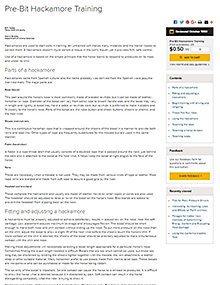
Pre-Bit Hackamore Training
Reviewed
Learn how to properly fit and adjust a hackamore to safely train young horses, ensuring effective communication without injuring sensitive mouth tissue.

Design Criteria for Debris Basins
Reviewed

Radon: An Indoor Health Hazard?
Reviewed
Indoor air can be polluted in a number of ways. Indoor pollutants include formaldehyde, carbon monoxide, respirable dust, nitrogen dioxide, radon and other gases. This guide focuses on just one of these pollutants — radon.
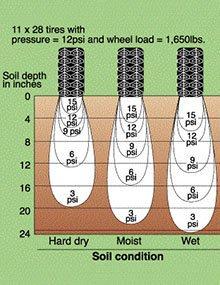
Soil Compaction: The Silent Thief
Reviewed
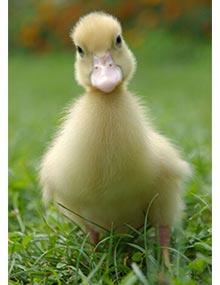
Brooding and Rearing Ducklings and Goslings
Reviewed
Goslings and ducklings can be brooded by broody chicken hens and most breeds of ducks and geese. Learn about brooder types, temperature, housing, feeding, watering, pasturing and fencing in this University of Missouri Extension guide.
Backgrounding Calves Part 1: Assessing the Opportunity
Reviewed
Backgrounding is the growing of steers & heifers from weaning until they enter the feedlot. Visit our site to learn more about backgrouding calves.
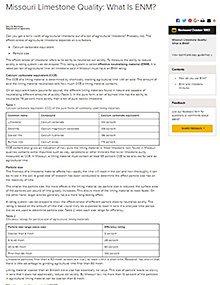
Missouri Limestone Quality: What Is ENM?
Reviewed
Effective Neutralizing Material measures agricultural limestone's ability to neutralize soil acidity, factoring in calcium carbonate content and particle size.
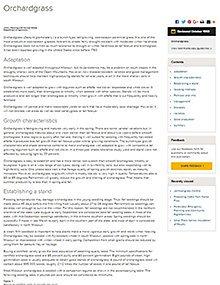
Orchardgrass
Reviewed
Orchardgrass is a cool-season perennial grass well-suited for Missouri, offering early spring growth, shade tolerance, and compatibility with legumes.

Agricultural Hand Signals
Reviewed
Voice communications are impossible in certain agricultural situations due to distance and noise. For this reason, standard Agricultural Hand Signals have been developed for farm machinery operators by the American Society of Agricultural Engineers. Hand signals can prevent accidents and save time. Use them and teach others to use them.
Nitrate and Water
Reviewed
Nitrates in water can harm livestock and infants; this guide explains sources, risks, and prevention strategies.

Buying a Packaged Farm Building
Reviewed
Guidance on selecting and purchasing pre-engineered farm buildings, covering site preparation, construction types, and load requirements.

Hot Weather Livestock Stress
Reviewed
Learn how high temperatures and humidity affect livestock, and discover strategies to mitigate heat stress during summer months.

Alfalfa
Reviewed
Alfalfa is the most productive legume for Missouri. Visit our website today to learn more about Alfalfa.
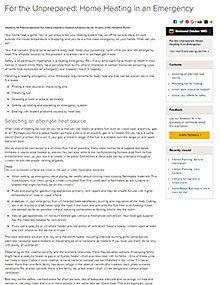
For the Unprepared: Home Heating in an Emergency
Reviewed
Your home heat is gone. You've just discovered your heating system may be off for several days. It's cold outside; the inside temperature is dropping, and you have a first class emergency on your hands. What can you do?

Cotton Insects and Mites
Reviewed
Editor's note
Shared Housing
Reviewed
Shared housing offers an alternative to living alone, with arrangements ranging from informal agreements to agency-assisted models.
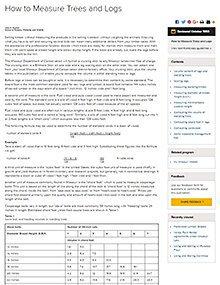
How to Measure Trees and Logs
Reviewed
Selling timber without measuring the products is like selling livestock without weighing the animals. Visit our site to learn how to measure trees and logs.
Selecting Wire Fencing Materials
Reviewed
There is an old adage that says "good fences make good neighbors." This is particularly true today in suburban areas ofMissouri where a neighbor's cow or horse is seldom welcome in nearby lawns or gardens. The most economical solution is a wire fence capable of containing your livestock.
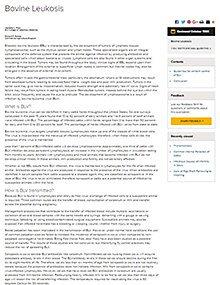
Bovine Leukosis
Reviewed
Enzootic bovine leukosis causes lymphatic tumors in cattle; BLV spreads via blood, colostrum, and possibly biting flies.
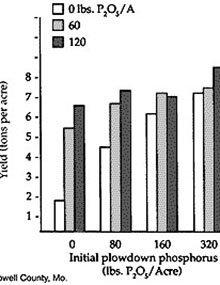
Phosphorus in Missouri Soils
Revised
Discover how temperature, drought, light, and grazing impact pasture plants and forage quality.
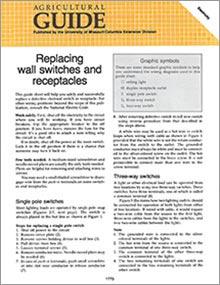
Replacing Wall Switches and Receptacles
Reviewed
Editor’s note
The PDF version of this publication includes illustrations.

Pesticides: Emergency Planning and Community Right-to-Know
Reviewed
Learn about Emergency Planning and Community Right-to-Know Act, its requirements for hazardous substances, and reporting procedures for emergency situations.

Feeds for Light Horses
Reviewed
Learn how to feed light horses efficiently by choosing the right balance of grains, roughages, and supplements to maintain their health and minimize costs.

Canola: A Promising Oilseed
Reviewed
Canola is a high-value oilseed crop ideal for Missouri farmers, offering benefits like soil erosion control and diversification. Learn about growing and marketing it.